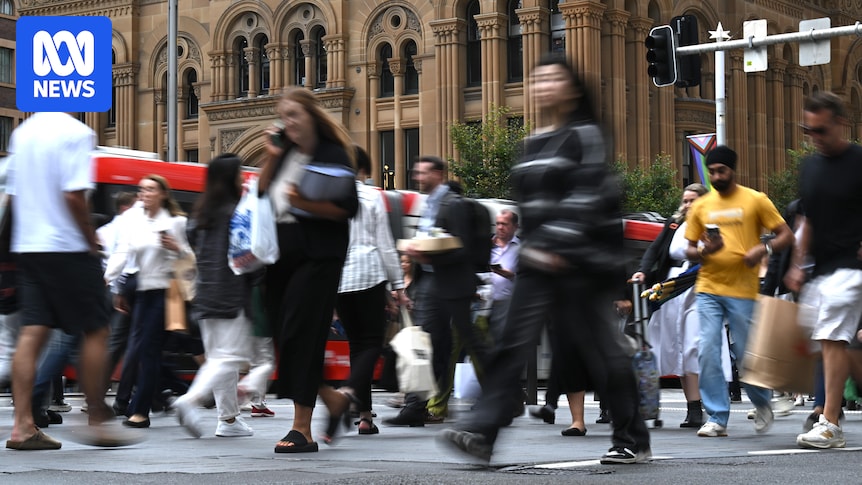Australia’s unemployment rate has remained steady in May despite a dip in employment.
The unemployment rate came in at 4.1 per cent last month, for the fifth month in a row, in seasonally adjusted terms.
Employment decreased by 2,500 people and the number of officially unemployed people declined by 2,600.
Weak GDP gives RBA green light for another interest rate cut in July
Since employment and unemployment both declined in May, the labour force shrank a little — by 5,100 people.
That saw the participation rate decline by 0.1 percentage points, to 67 per cent, down from 67.1 per cent in April.
The apparent slowdown in momentum in Australia’s labour market in May follows an unexpectedly strong jobs surge in April, when 87,600 jobs were added.
Kar Chong Low, economist for Oxford Economics Australia, said he wasn’t concerned about May’s weakness.
But he is expecting employment growth to slow down this year, with rising global uncertainty.
“The drop in jobs does not reflect a sudden reversal of the labour market’s fortunes. Instead, part of the fall reflects normalisation following exceptionally strong growth in April,” he said.
“Looking ahead, the labour market’s strong run over the past 12 months will slowly fade. Global uncertainty is clouding business decisions and prompting many firms to temper hiring plans,” he said.
What’s the outlook for jobs?
Callam Pickering, Asia Pacific economist at global job site Indeed, said it was a “somewhat disappointing result” for jobs growth in May.
But he also said we shouldn’t dwell on a slight decline in employment given the strong gains seen in prior months.
“Australian employment has increased by around 329,100 people over the past year, outpacing growth in the working age population,” he said.
“That’s helped to keep the unemployment rate low, supporting Australian households throughout an otherwise difficult economic period.
“Forward-looking measures of labour demand, such as Indeed job postings, remain healthy.
“There is still plenty of demand for workers across the country and these vacancies will translate into strong employment gains in the near-term.
“That said, in an uncertain economic environment hiring plans can change quickly and many businesses may find it difficult to navigate the current economic and geopolitical climate,” Mr Pickering said.
Is the post-COVID surge in immigration nearing its end?
Independent economist Saul Eslake said the data show the monthly growth in the civilian working-age population (people aged 15 years and over) has fallen to 28,700 in the current quarter.
That’s the smallest level of population growth since the December quarter of 2021, when the COVID international border restrictions were still in place, he said.
It’s down from a peak of 63,300 a month in the March quarter of 2023.
Uncertainty about Trump’s tariffs isn’t good for Australia, RBA official says
“That suggests that the post-COVID surge in immigration and population has now more or less finished,”
he said.
He said the employment result was also unlikely to have any bearing on the Reserve Bank’s interest rate deliberations next month.
The RBA’s next Monetary Policy Board meeting is on July 7-8.
“They are likely to interpret this data (and yesterday’s news of a 2.8 per cent fall in job vacancies according to Jobs and Skills Australia’s internet vacancies index) as indicating that the labour market is still tight by historical standards, though slowly becoming less so,” he said.
“Financial markets (and most economists) are very confident that there will be another 25 basis point rate cut at that meeting, although for what it’s worth I’m not similarly persuaded.”
He said he thinks the RBA will probably wait until it has the June quarter inflation data before it cuts rates again at its mid-August meeting.
